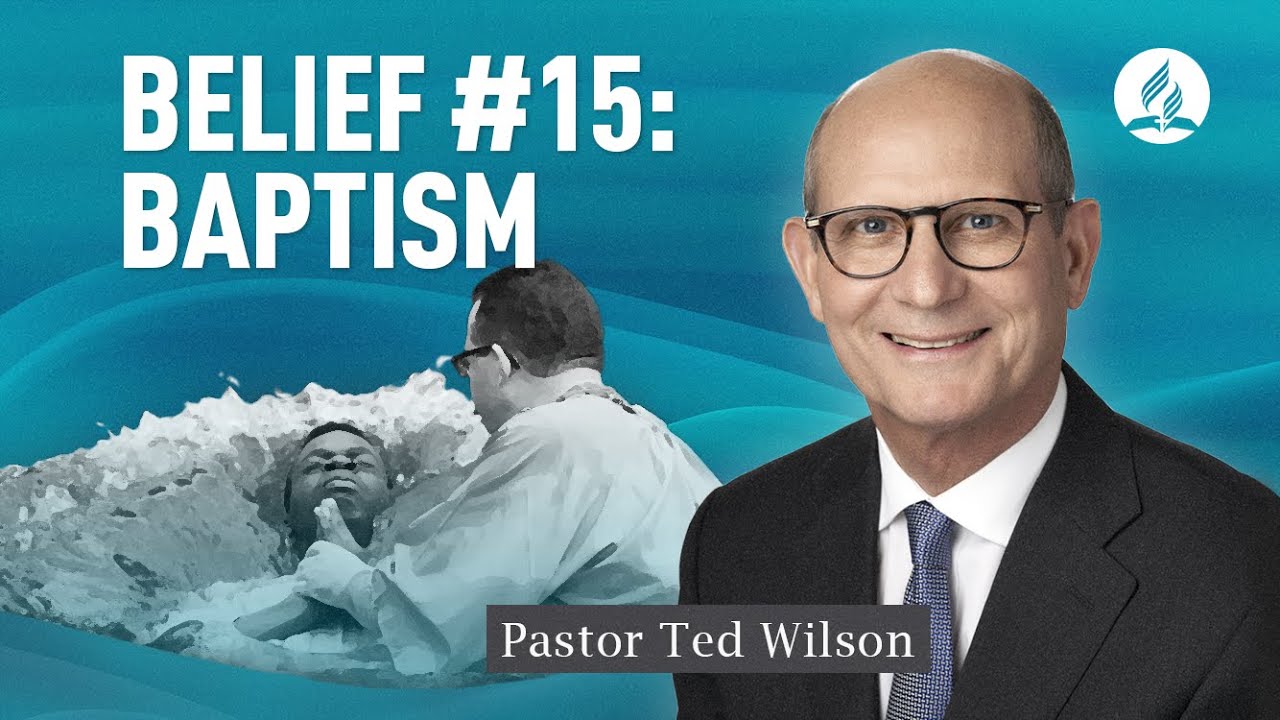
In this episode, Pastor Ted Wilson talks about baptism, constituting the fifteenth fundamental belief of the Seventh-day Adventists.
Baptism, a public ceremony proclaiming that Jesus is your Lord and Savior, demonstrates your commitment to Him.
Its biblical practice involves immersion in water which can be traced back to Jesus’ baptism by John the Baptist before He started His ministry. Similarly, His followers were baptized. And before He ascended back to heaven, He commissioned the disciples to continue baptizing people.
In Matthew 28:18-20, Jesus says, “All authority has been given to Me in heaven and on earth. Go therefore and make disciples of all the nations, baptizing them in the name of the Father and of the Son and of the Holy Spirit, teaching them to observe all things that I have commanded you; and lo, I am with you always, even to the end of the age.”
Water immersion, as practiced by Seventh-day Adventists, symbolizes Christ’s death and resurrection. It provides forgiveness of our sins. In the process, we proclaim to accept His sacrifice and acknowledge Him as our personal Savior. Coming out of the water symbolizes rising to a new life in Christ.
“Baptism” comes from the Greek word baptizo, which means to “immerse, submerge” and “make fully wet.”
In connection, Colossians 2:12 explains baptism as being “buried with Him…in which you also were raised with Him through faith in the working of God, Who raised Him from the dead.”
The physical act of baptism is not what changes you. Instead, it is the Holy Spirit’s work that makes the difference. Baptism moves your heart toward a closer relationship with Christ. It marks the beginning of a journey of a changed life.
The Seventh-day Adventist Fundamental Belief #15 puts it this way: “By baptism, we confess our faith in the death and resurrection of Jesus Christ, and testify of our death to sin and of our purpose to walk in newness of life. Thus, we acknowledge Christ as Lord and Savior, become His people, and are received as members by His church.
It continues, “Baptism is a symbol of our union with Christ, the forgiveness of our sins, and our reception of the Holy Spirit. It is by immersion in water and is contingent on an affirmation of faith in Jesus and evidence of repentance of sin. It follows instruction in the Holy Scriptures and acceptance of their teachings.”
Reading about baptism in the New Testament, we find three important aspects:
-
The people believed the good news they heard (Acts 2:41).
-
Believers confessed their sins (Mark 1:5).
-
Baptism was the result of their repentance (Matthew 3:11, Acts 2:38).
Since baptism is based upon a conscious decision to confess and repent of your sins and to accept Jesus as your Savior, the Adventist church does not practice infant baptism. Infants are too young to understand the meaning of this important rite.
Now, baptism is an essential step in the life of a believer and is a reason to celebrate as he publicly declares his intent to follow Jesus.
Ellen White writes, “The ceremony of baptism is a most solemn one. Men and women are baptized in the name of the Father, the Son, and the Holy Ghost. This signifies that the three greatest representatives of heavenly authority behold the baptismal service and hear the vows that are made by human agents to walk henceforth in newness of life. In taking the baptismal vows, man unites with the highest powers in the heavenly courts. He covenants to live the life that Christ lived while on this earth. And Christ, on His part, fulfills every promise that He has made in His Word. He molds the character of every one who follows in His footsteps. Wonderful, wonderful is His work in behalf of sinners!” (17 LTMS, MS 57, 1902, par. 26).
To learn more about baptism, visit www.adventist.org/baptism. You may also contact your local Adventist pastor about how you can commit your life to God through baptism and become a member of the Seventh-day Adventist Church. If you’ve already been baptized, you may also renew your commitment today.
Visited 57 times, 1 visit(s) today






